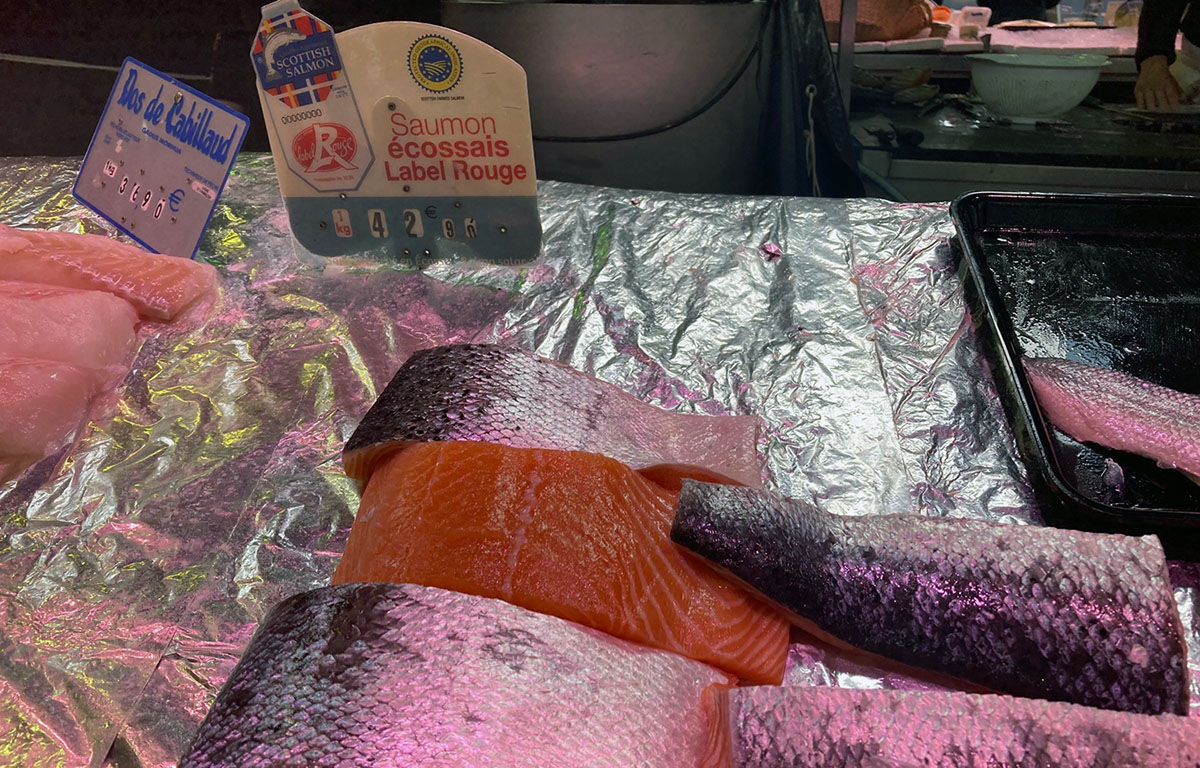The government of France has announced new changes to its Label Rouge quality mark, which the Scottish salmon industry says will help expand its markets.
Label Rouge is a French mark of quality originally established in the 1960s that places stringent quality standards on food producers. For Scotland-based salmon producers, Label Rouge has long been an important part of their overall marketing strategy in Europe, and the product was the first non-French product to ever be awarded the quality label.
“Our fish are grown under strict quality control standards and certified by an exacting quality-assurance scheme that is recognized worldwide and guaranteed provenance,” Scottish Quality Salmon Chair Su Cox said. “These practical updates to the Cahier des Charge will safeguard our internationally recognized quality brand.”
The French government recently announced that it will now allow larger fish of between 6 to 8 kilograms to carry the label, which Salmon Scotland said will likely increase the sales revenue of Scottish salmon headed to France and the rest of Europe.
According to a release from Salmon Scotland, France is the country’s top export destination for farmed salmon. The country was responsible for GBP 272 million (USD 340 million, EUR 318.5 million) in export value in 2023, representing 47 percent of the value of all of the country’s salmon exports.
Roughly one-third of those exports come under the Label Rouge mark, and the mark is also increasingly being recognized in Spain, Germany, and Italy, Salmon Scotland said.
“Label Rouge Scottish salmon is a key foundation of the success of our sector, championing the quality and taste of the very best, tastiest salmon,” Salmon Scotland Chief Executive Tavish Scott said. “The premium on Label Rouge means higher revenues, which support the Scottish economy, fund public services, help rural communities thrive, and sustain jobs across the Highlands and islands of Scotland.”
In addition to allowing larger fish, the new rules will also permit larger smolt to be put into net pens, increasing survival rates by putting stronger salmon in the water and minimizing the time they spend in the ocean. The larger post-smolt strategy has been increasingly popular for salmon farmers in Norway, with companies like Grieg and Mowi highlighting the strategy as a priority in 2024.
Other rule changes will also allow alternatives to marine ingredients, including insects and algal oils, to be used in aquaculture feed. Salmon Scotland said a new requirement mandates that 10 percent of the flesh of salmon should contain omega-3 oils.
Scott said the changes will help the industry improve sales while maintaining the same level of quality.
“Operating as sustainably as possible is a top priority for all salmon farmers, and these changes help us to provide the same great texture and taste, with a low carbon footprint,” he said.








